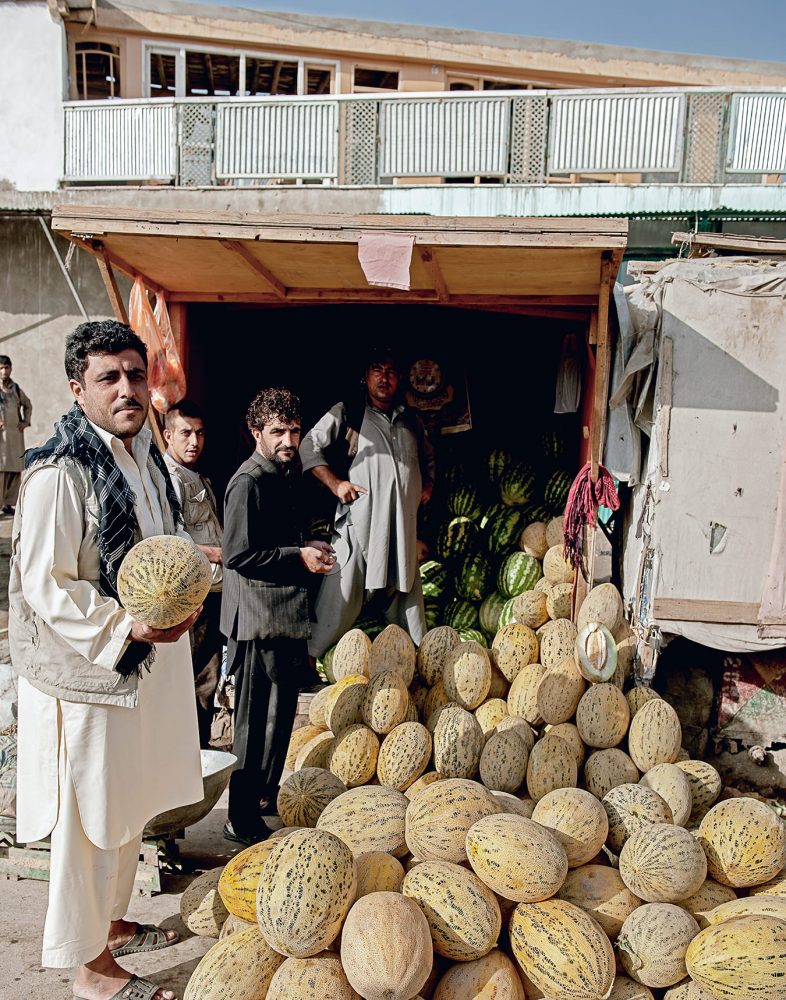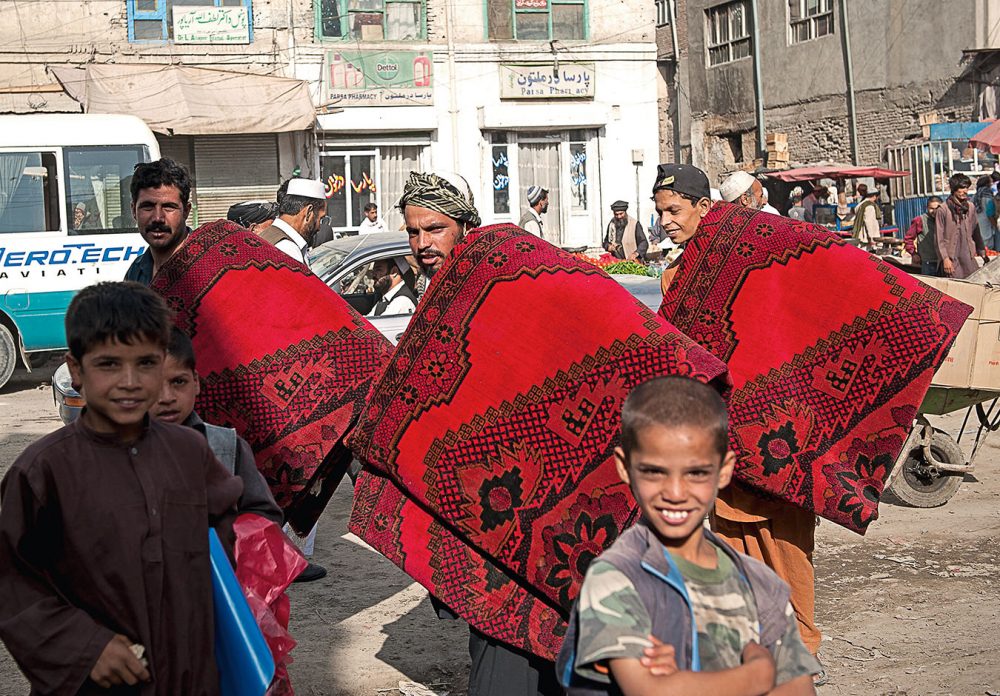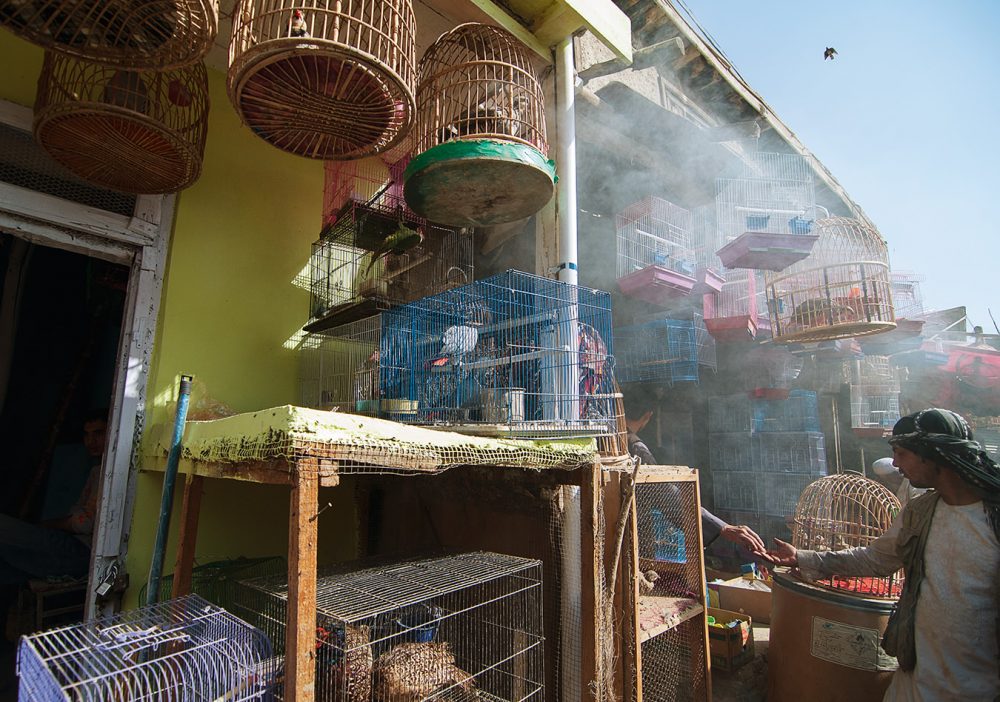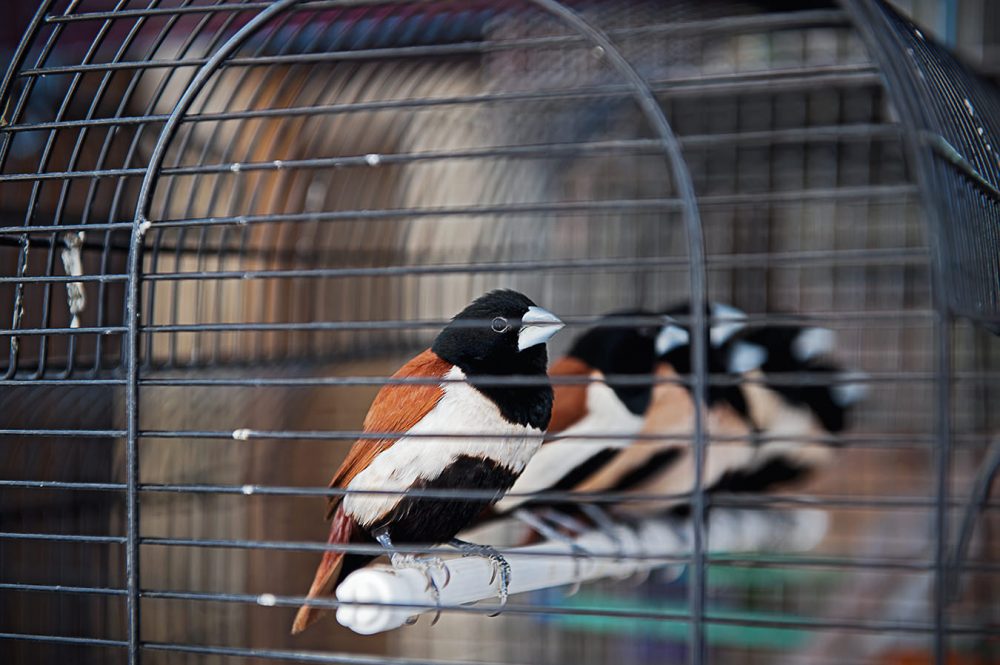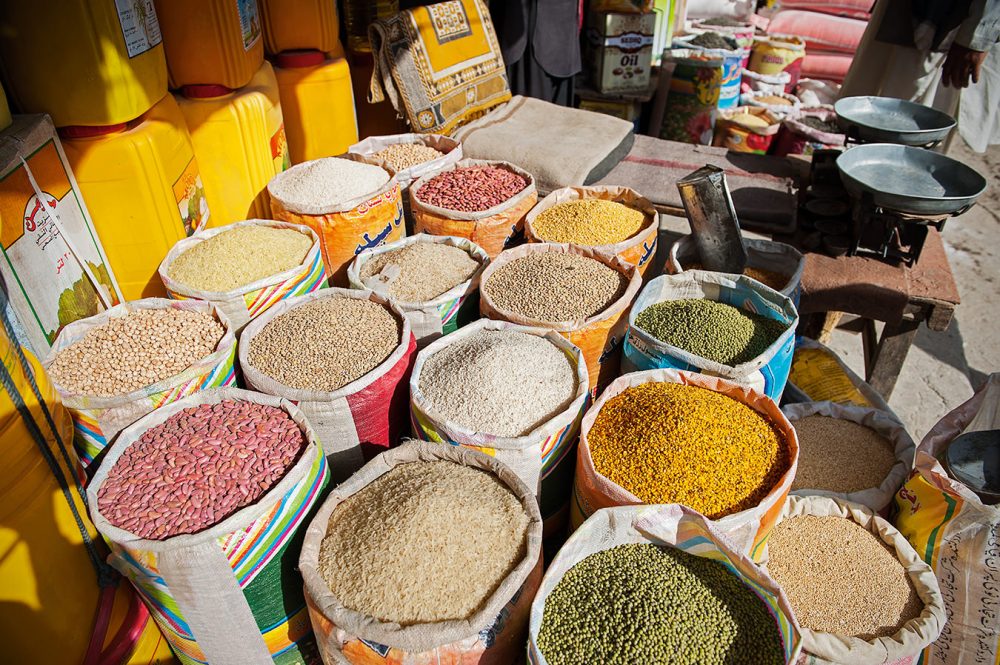Plunging into this Gordian knot of overheated Kabul traffic, you know there will be no turning back. Problem is, there also seems little chance of going forward. Dusty and dented cars, riding low on their axles from too many passengers, lurch forward centimetres at a time. Boldness is required to slip through the brief chance openings that will put you deeper into this tangle of automobiles, trucks, buses, and vans. Sweating, enraged but impotent drivers glare from awkwardly close distances. This is the crossing of the Rubicon. It’s an awkward tango through traffic gridlock; the ultimate destination is a mirage through a shimmering wall of leaded gasoline fumes.
Home to roughly five million people, the mountain city of Kabul, Afghanistan’s 3,500-year-old capital, was, in ancient times, a centre of education, politics, and culture. Today, following three decades of war, a traumatized population is just beginning to embrace civil society once again, with girls and boys attending school, a working (if corrupt) government, and the reconstruction of razed infrastructure. Such efforts are taxed by the constant influx of rural refugees seeking safe haven from fundamentalist Taliban extremists, who continue to terrorize the countryside.
Kabul is also a city of expats; NGOs, the United Nations, and NATO and American forces have tried to rebuild and secure the nation since 2001, when the Taliban was ousted. Security needs have turned areas of Kabul into enclaves—embassies hide behind thick, high concrete walls, protected by snipers and guards cradling assault rifles. Such zones of safety have caused Kabul roadways—originally built for a population of 400,000—to be diverted like a dammed river, forcing traffic into a few remaining thoroughfares.
Pul-e Khishti Bazaar is Kabul’s main open-air market, where you’ll be enveloped by a cacophony of sight, scent, and sound. Until it was destroyed in the 1980s during the Soviet Union occupation, Pul-e Khishti Bazaar, in the Old City, was regarded as not only one of the most ancient but also one of the most beautiful outdoor markets in the world—a jewel of a tourist draw during Kabul’s pre-war era, a happier time of outdoor cafés, treed streets, short skirts, and abundant hashish.
In the Dari language, Pul-e means “bridge” and Khishti means “brick”, or “built by small bricks”. The nearby bridge spans the dried-up, garbage-strewn Kabul River, where Afghan men gather to smoke heroin, seeking fleeting escape from poverty and war. At the bazaar, slaughtered sheep and cattle hang upside down on heavy iron hooks. Off to the side, their skins lie in neat, folded squares beside decapitated heads. Internal organs—so vibrantly red they are almost neon—hang next to the carcasses that once cocooned them. One magnificent white ram with corkscrew horns, his crown of curls hennaed red, lies with spindly legs tucked underneath, oblivious to the blood miasma of his slaughtered brethren.
“We have good earth and soil in Afghanistan,” says Tokhy. “The land is so fertile because we have lots of sun and very good, sweet water.”
Afghans love meat. In times of plenty, the national diet consists largely of animal products: meat, milk, yogurt, and cheeses like gouda and mozzarella. Unlike Canadian livestock, there is no thick layer of white fat—these beasts are lean and sinewy from foraging for grass on steep, arid hills and mountainsides. One butchered animal stands out from the others. A breed of sheep called the Afghan Arabi can be picked out immediately, despite being stripped of its wooly hide. This “fat-rumped” sheep stores adipose tissue in two watermelon-sized balls in its back end. Barbecued, these globes are a delicacy. Efficient little ungulates, the Arabi also provides fine-quality wool used to make the world-famous Afghanistan rugs.
The Afghanistan economy is agrarian and primitive, and thus very localized. Abdul Ghias Tokhy, Afghanistan’s Consulate General in Vancouver, estimates that the animals and vegetables at Pul-e Khishti Bazaar come from, at most, 10 kilometres away. In Afghanistan, different areas specialize in different products: the Qarabagh district in Kabul province is famous for grapes and raisins, while Istalif is famous for pottery and grape varieties. Badakhshan province produces fragrant cumin as well as the semi-precious blue stone lapis lazuli. Herat, once known for wine production—strictly forbidden today under Islam—is famed for silks and saffron. “We have good earth and soil in Afghanistan,” says Tokhy. “The land is so fertile because we have lots of sun and very good, sweet water.”
Still, there is enough variety at Pul-e Khishti Bazaar to occupy a shopper for a day. It is a place not only for shopping but also for services. Adjacent to the hanging row of animal corpses is a narrow wooden stall that is stuffed full of shalwar kameez, the loose pants and tunics that men wear. At barely two metres across, there is just enough room for both the garments and an old tailor, who squints as he irons, one eye opaque white with blindness.
Beside the elderly tailor is another narrow cubicle where kites are sold. Kite flying is a national pastime beloved by children and adults—banned under the Taliban for being “un-Islamic”. Boys will buy small, plastic kites for as little as 250 Afghanis, equal to a few dollars, and large rolls of hard plastic string for flying them, keeping their fingers taped to prevent cuts. Some kites are designed with butterfly wings, others emblazoned with the faces of American presidents or dark-eyed Bollywood beauties.
Near the carnage of meat are carts piled high with harvest vegetables: corpulent purple eggplants, striped pale-green melons piled like boulders, jade clusters of grapes, and plump, perfectly complexioned apples like the sunburned cheeks of children. Emerald-green cilantro and mint are stacked in sheaves, the scent as startling as perfume. Indeed, this is increasingly what Afghanistan mint is being used for. French perfumers are buying it in bulk to distill for use in their scents, Tokhy explains.
Next to a lean-faced man selling fresh-brewed tea is another narrow wooden stall, its keeper a blue-turbaned Sikh spice trader. Bright yellow, orange, and bronze spices such as turmeric and saffron, as well as rose petals used in perfume making, are displayed out front in utilitarian metal containers. (Halifax-based the 7 Virtues creates perfumes from Afghanistan orange blossom oils and rose oils. Its signature scent, the Noble Rose of Afghanistan, is made from the essence of 178 hand-picked rose petals from the province of Jalalabad.)
There are carts piled high with harvest vegetables: corpulent purple eggplants, striped pale-green melons piled like boulders, jade clusters of grapes, and plump, perfectly complexioned apples like the sunburned cheeks of children.
Tokhy says that saffron, one of the most expensive spices in the world, is becoming a major export and an alternative to opium production. Afghans believe that saffron has many health benefits and consider it an aphrodisiac. I hand over a small pile of worn Afghani notes to the Sikh trader, and using old-fashioned weigh scales, he measures spices in 100-gram portions as precisely as gold dust. “Tashakor,” I thank him in Dari as he hands me my spice-filled pink bags as translucent as jellyfish.
A short way from the spice trader is a narrow, medieval alleyway. This winding passageway is called Ka Farushi bazaar, or colloquially Bird Alley. Ka means “hay” and Farushi means “selling”; it was once a place where horse feed was bought and sold. The keeping of songbirds as pets is an old Afghan tradition; birds are mentioned in the Koran, and it is said that the prophet Solomon used birds as special messengers. Today, dim sunlight shines upon thousands of birds imprisoned in metal and wood cages. Tropical green parrots are stuffed up to 10 to a cage while Afghan fighting birds, plump-breasted and tan with dots of black and white, are caged alone. Cockfights are wildly popular in Afghanistan, and the men gather every Friday after prayers to bet on the bloody outcome.
There are other markets in Kabul that reflect Afghanistan’s modern socio-economic history. “Bush Markets” are named for former American president George W. Bush, who ordered the military action in Afghanistan in 2001. Devoid of Pul-e Khishti Bazaar’s life and colour, Bush Markets are repositories for cast-off and outdated American consumer goods like soap, razors, and dandruff shampoo—all left behind by a decade of Western troops and expats.
Across the square, where less than a year ago, a suicide bomber killed 80 people during the holy day of Ashura, is the Turquoise Mountain district. A place of clean alleyways, smooth, tan mud buildings, and elaborately carved wooden window shutters, Turquoise Mountain is an ambitious project started by Prince Charles in 2006 to restore the old business and cultural centre of Murad Khane. Turquoise Mountain initiatives include the restoration of the old bazaar to its former glory using traditional construction materials. It has also created a training centre for craftspeople and built sewage and water infrastructure as well as a health centre.
Rising from the ashes is not a new thing for Afghans, who, living at the geopolitical intertwine of the Middle East, Russia, and Asia, suffered brutal invaders for millennia, from Alexander the Great to the Mongols, whose empire was forged in Central Asia. More recently, Afghanistan has endured the military might of Great Britain, Russia, and the U.S. Yet out of it all, the courage, creativity, and dignity of Afghans have endured, helped by their love of beautiful things and the goodness of the earth: the vegetables, fruits, herbs, and animals that provide for the necessities of life.

